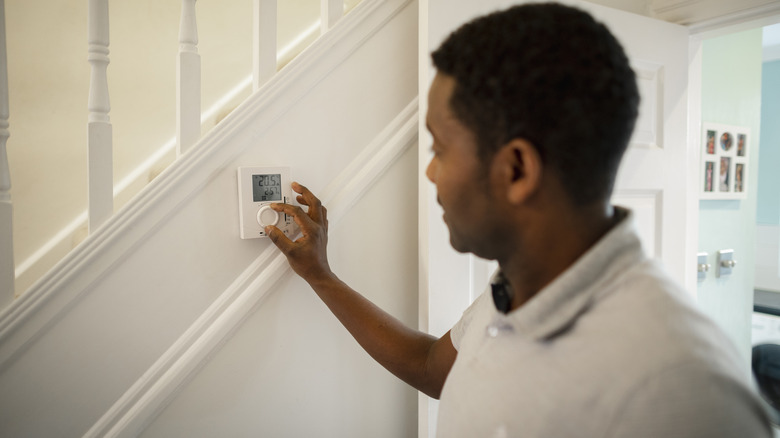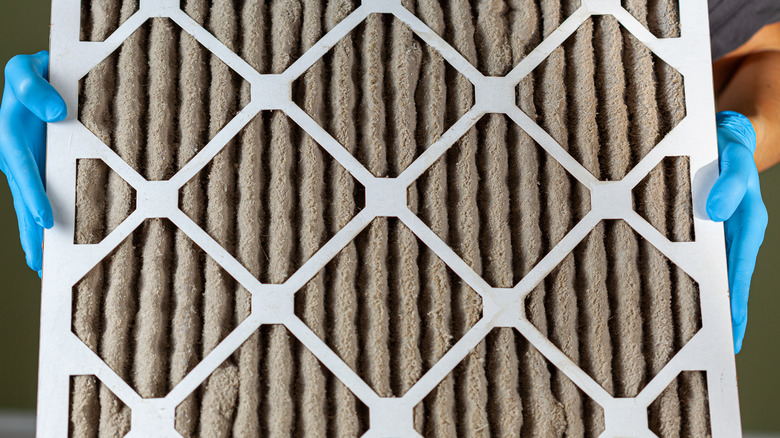What It Means When Your Furnace Is Short Cycling And Signs To Look Out For
Have you noticed your furnace turning on and off frequently? It should turn on, run as long as it takes to heat your home to the desired temp, and then shut off. A furnace may short cycle, however, meaning it turns on and runs but then cuts off within a shorter-than-normal period when miscommunication occurs within the system. For some reason, the system thinks it needs to shut down far sooner than it should.
Many things can cause this, including a thermostat that needs to be replaced or the system overheating and shutting off automatically to prevent damage. Other times, it's just not getting enough of the air it needs to operate properly. If you're experiencing short cycling, don't ignore it, as it's stressing your system — and that means it's putting the longevity of the heater at risk. Even more important, your home likely isn't reaching a temperature that's comfortable for you. Understanding what furnace short cycling is and how to spot it can help you to get the necessary furnace repairs more quickly. The underlying problem will impact how much it costs to repair your furnace.
Signs your furnace is short cycling
You may not pay much attention to how often your heating system turns on and runs each hour; if it's a modern system, it's working consistently and quietly in the background of your home. However, heating systems will typically run through three and up to eight cycles every hour, depending on certain conditions. Most systems should run at the low end of this spectrum as long as there aren't any factors that require it to run more often, such as a door or window being left open to allow the cold air in. The other factor to consider is the length of each run.
A typical furnace should run about 10 to 15 minutes per cycle. That's enough time to heat a home to the desired temperature. As you can see, if you hear your system cycle on and off more than a few times in an hour, it's not — for some reason — reaching the desired length. Note that homes with improved insulation may run for as little as five minutes, though, and for these homes, that's enough to get them to the desired temperature.
Aside from frequently turning on and off and running for very short periods, there are other signs your furnace is short cycling, like having a cold home and the temperatures listed on the thermostat never matching (the temperature you set and the current temp of the home never seem to match). You may also notice an increase in your energy bills if this has occurred for a long time.
Why a furnace may short cycle
Now that you've noticed signs your furnace is short cycling, the next question will be why is it occurring, and what can you do about it. A common cause is a dirty air filter, which restricts the amount of air the system can pull in, making it difficult to run and causing the furnace to stop trying. If it's clogged, replacing the filter is all you need to do. Other times, however, the thermostat is faulty, such as not reading temperatures properly. If so, start by trying to replace the battery or replace the thermostat itself if it's not operational after that.
Other times, the problems causing a furnace to short cycle are a bit more complex and require the support of a heating and cooling technician. In some situations, the system may overheat, putting the components at risk of damage. The system may also shut down to prevent significant damage. Further, if the furnace is older and inefficient, it may not have the power and performance ability to meet your home's demands. That could also tax it enough to short cycle, especially if it's the wrong size for your home. A new furnace may be necessary.
Another concern is the heat exchanger, which is what helps to heat the air itself. Over time, this system can wear down or suffer damage like cracks and warping, requiring replacement to get it back to working properly. That's likely a repair for a professional.


